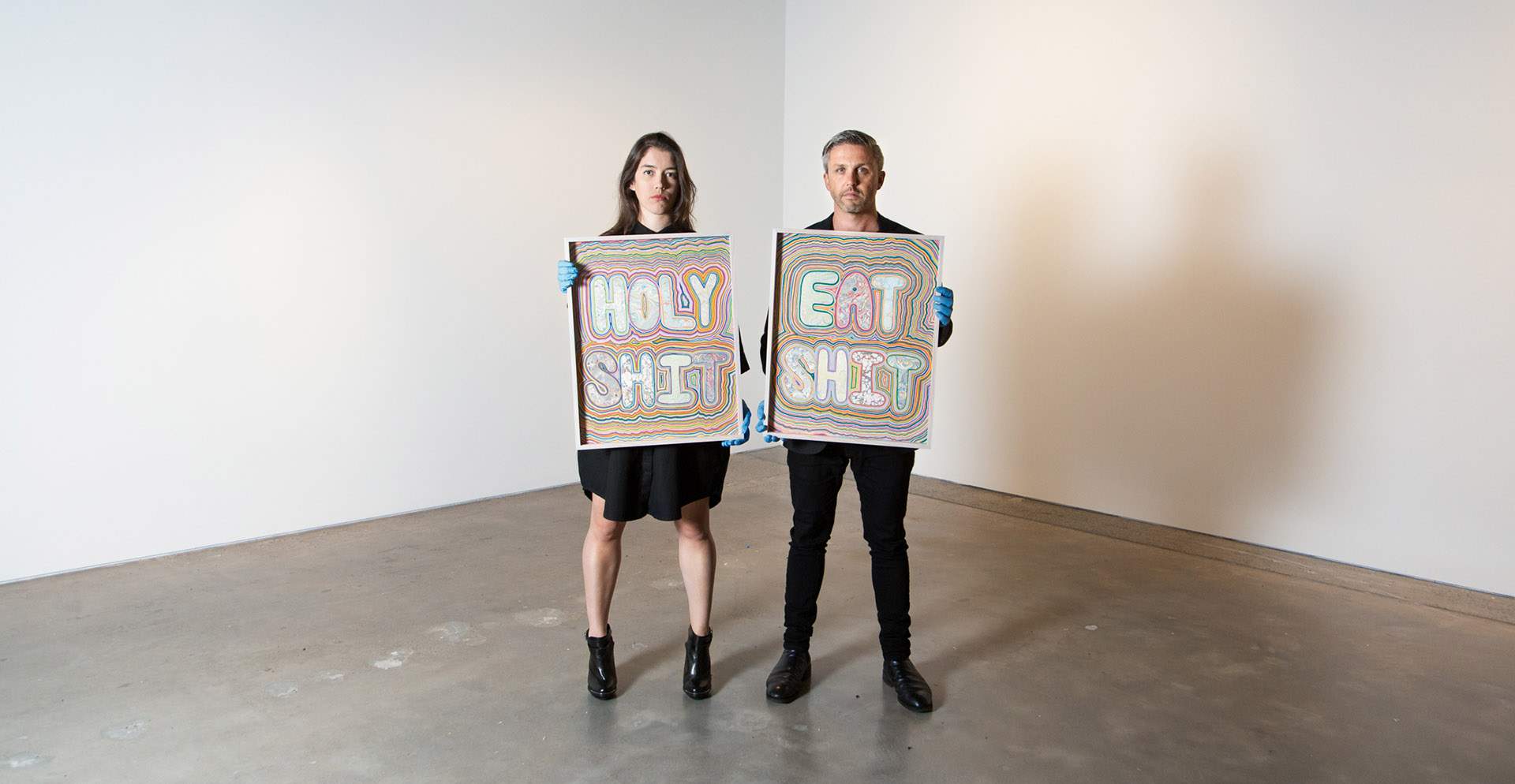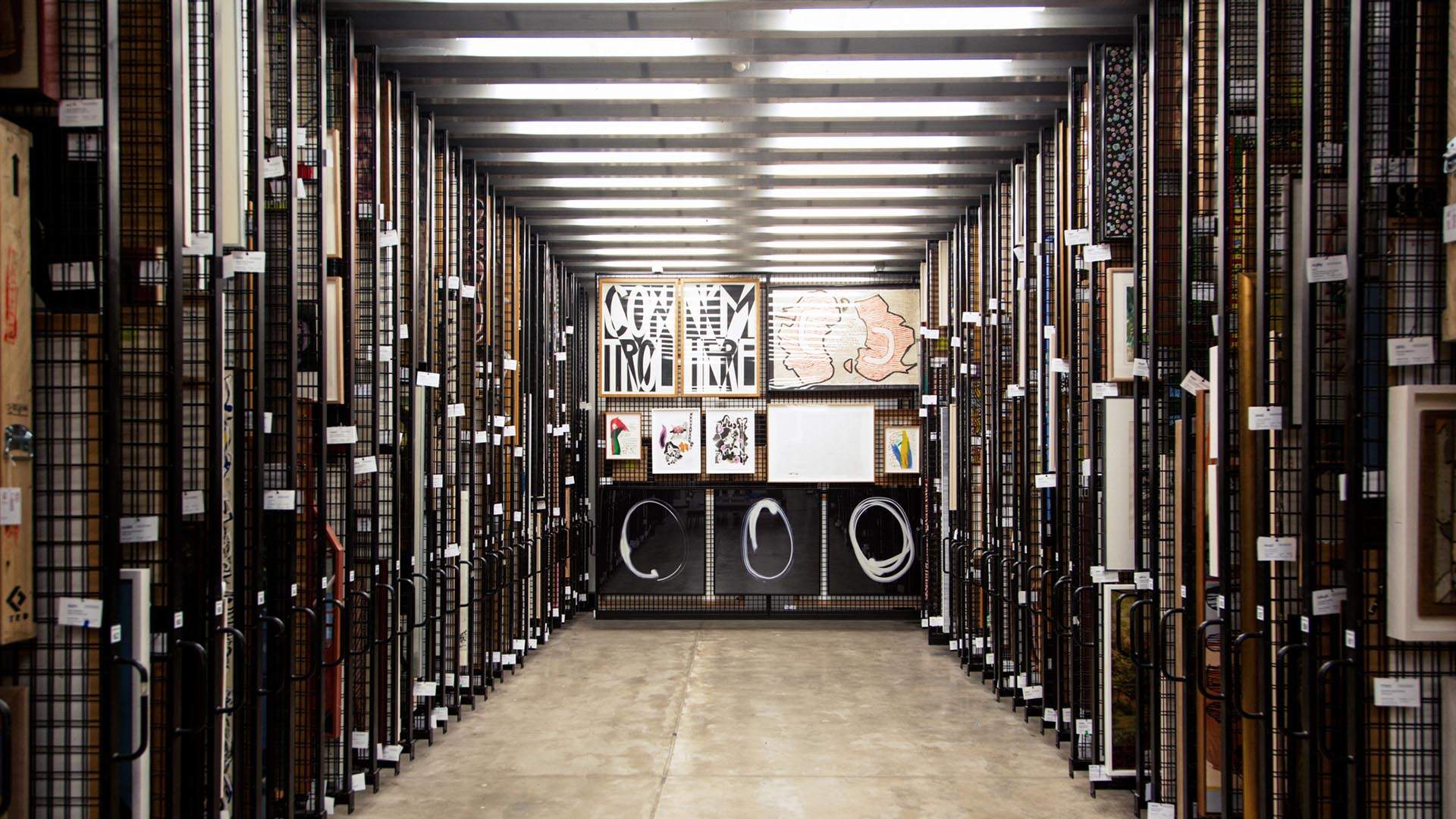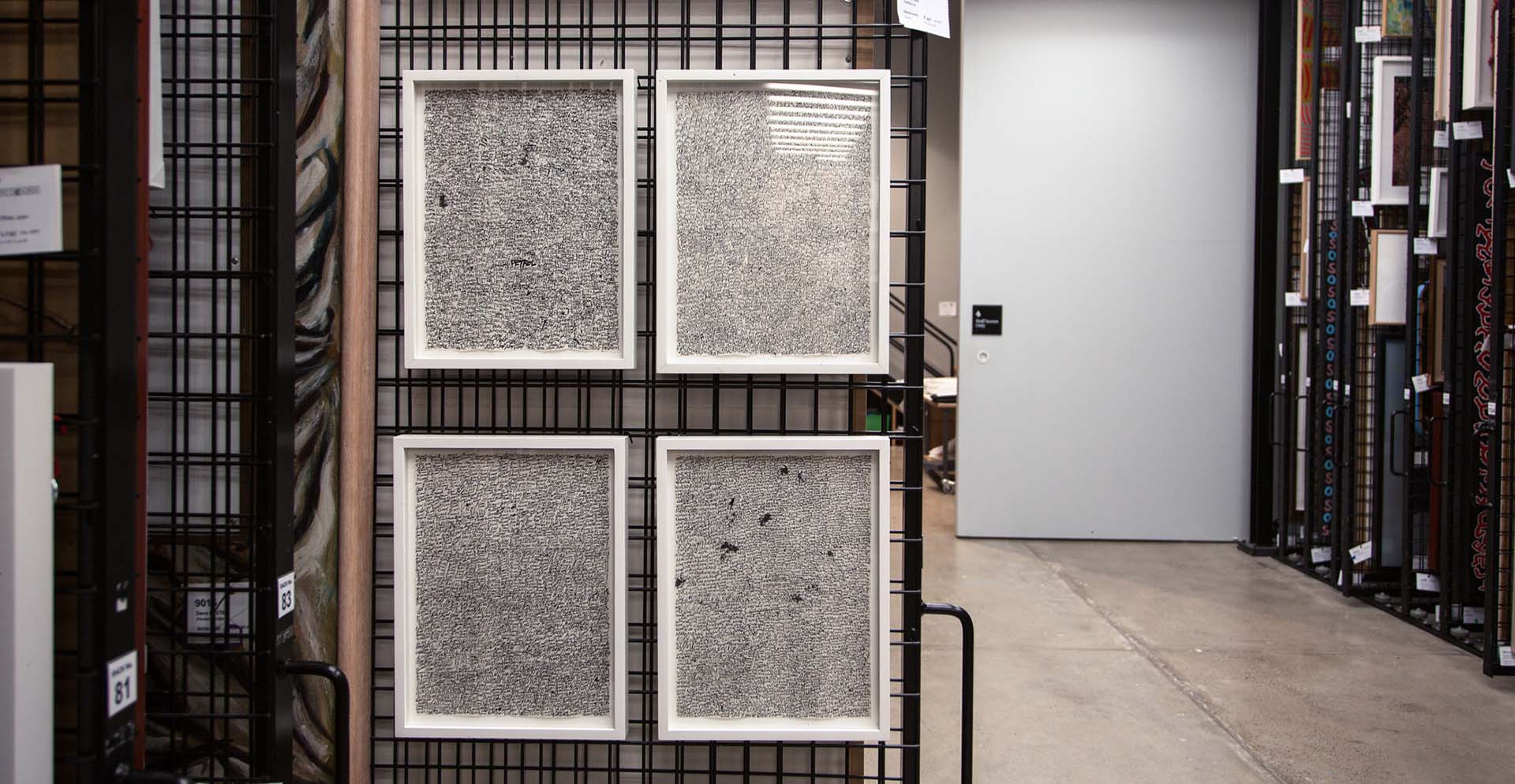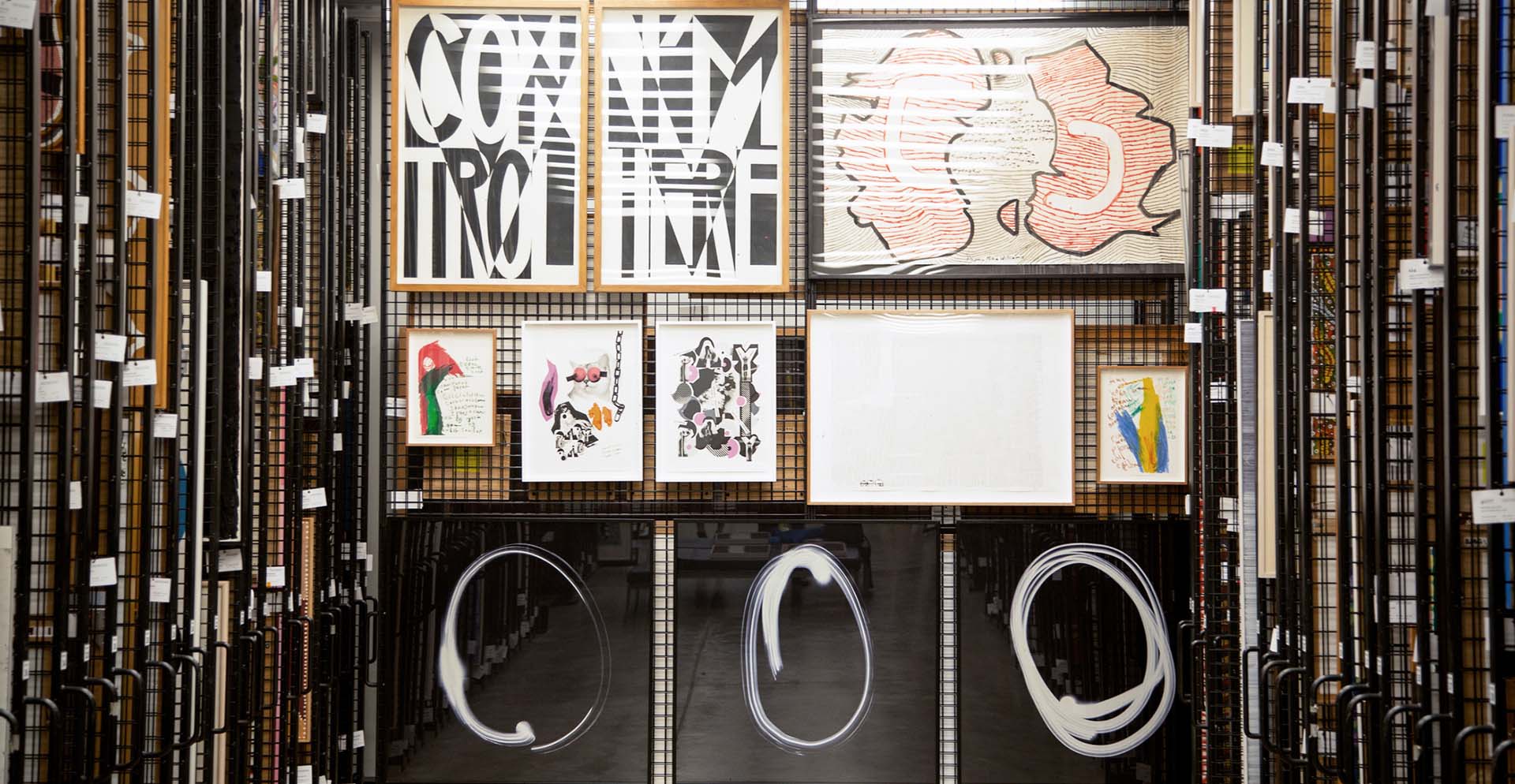Artbank's Latest Exhibition Is All About Text, Baby
It's cheekily-named, thematic and filled with puns.
In partnership with
Famous for its support of Australian artists, Artbank holds one of the largest collections of Australian art in the world (approximately 10,000 works by over 3500 artists). The government institution rents out art from their huge collection to individuals, companies, governments and embassies all over the world. While providing direct support to artists and promoting the value of Australian contemporary art to the public, they also regularly curate events and exhibitions for us to enjoy at the Artbank headquarters in Waterloo.
The newest is Let's Talk About Text — by Artbank curators Daniel Mudie Cunningham and Miriam Kelly. The colourful, thoughtful and varied exhibition brings together work from a range of artists who have harnessed text-based communication as a pictorial device. "From slogan statements to vernacular fragments and found fonts, the exhibition focuses on how artists respond to and encourage the visual pleasure of inventive typographic forms, for personal and political ends," says Cunningham and Kelly.
To curate the cheekily-named exhibition, the pair delved through the large collection of art on hand until they found an area with a rich thematic holding. This is often the process when curating shows for Artbank. "We developed the exhibition initially through the idea of correspondence, bouncing ideas back and forth until we honed into this one concept," says Cunningham and Kelly. "There is a wonderful selection of works that depict text, from narrative to more graphic applications."
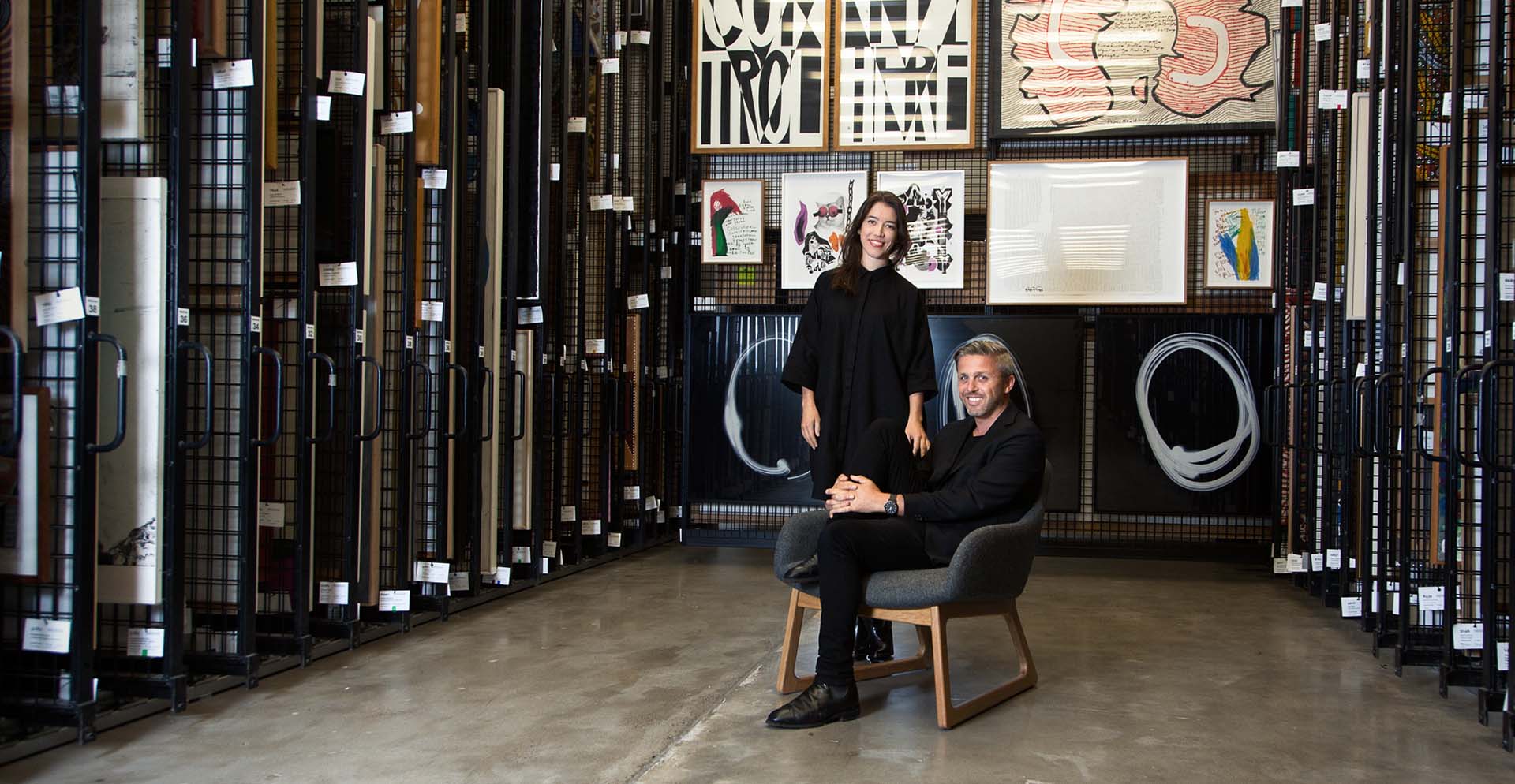
"Text in art offers an immediacy in an artist's message, yet holds the potential for multiple interpretations through word puns and play. Some works have the potential to pack a punch at first encounter, but then also lie in wait with broader meanings becoming apparent over time. We were interested initially in the difference between looking and reading in relation to how we as viewers engage with contemporary art. There is the assumption that looking and reading require difference levels of active participation. Further, we are interested in the way that text shapes our understanding of the world.
Each artist was selected for their distinctive aesthetic and conceptual engagement with text. "They're tied together by this premise yet also superbly individual. As curators we have had to make a rigorous selection drilling down to works by 12 or so artists, but we are looking forward to the possibility of changing over works as they lease from the exhibition, expanding and shifting the dialogues between the collection and within gallery." The exhibition opens on March 16 (the opening party will have natural wine from Jauma and an incredible Salt-n-Pepa tribute performance from Enigma Quartet, if you're keen). In anticipation, we asked Cunningham and Kelly to pick five stand-out artists and give us a little background knowledge on their work.
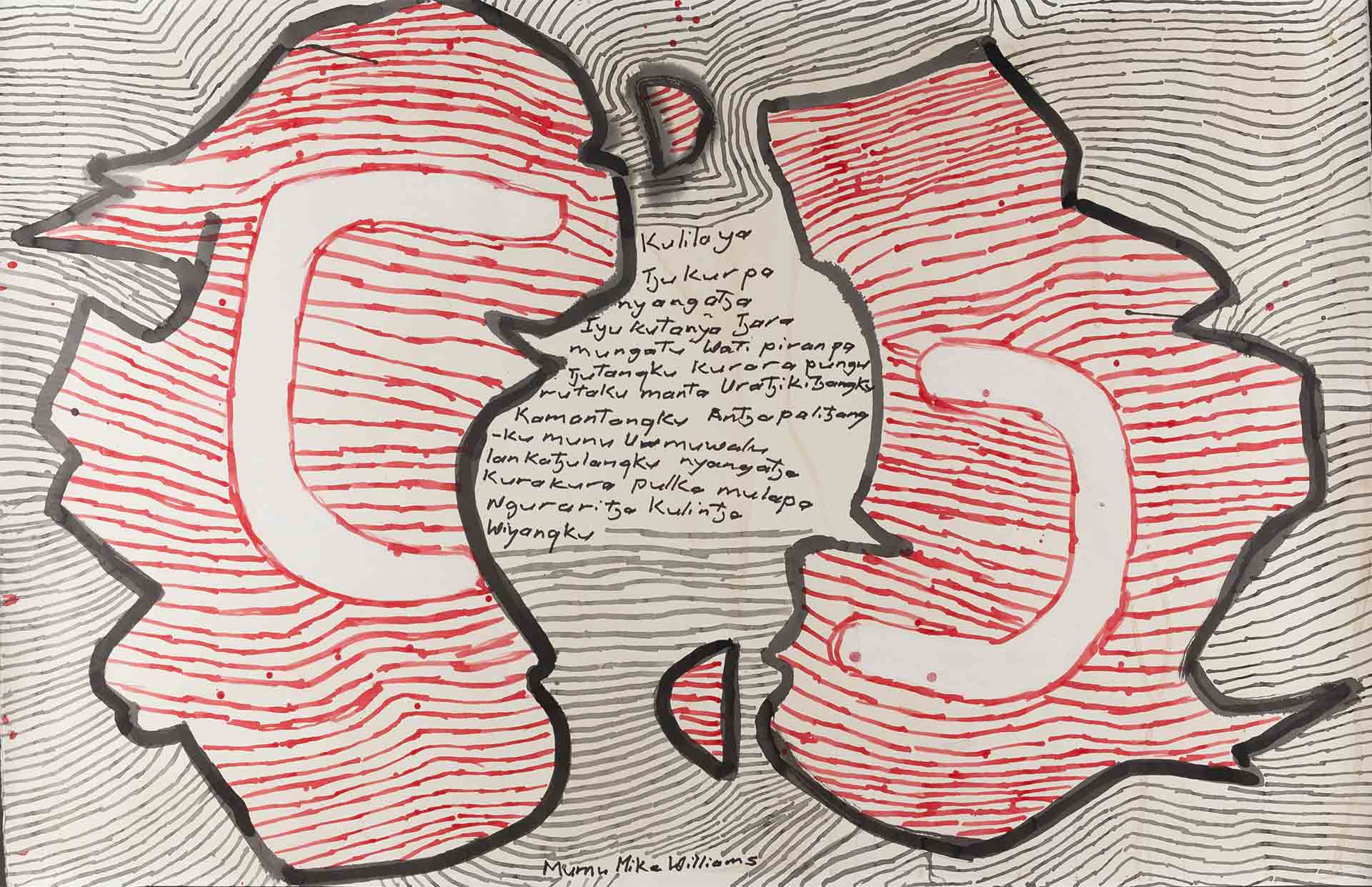
Mumu Mike Williams, Iyakuta Tjukurpa (2016), Artbank collection.
MUMU MIKE WILLIAMS
"Since 2010, Mumu Mike Williams has exhibited striking paintings that document his dedication to Anangu culture and heritage. Iyakuta Tjukurpa is part of a series of bold paintings on paper, maps and re-purposed canvas Australia Post bags that speak metaphorically about the politics of ownership, heritage, knowledge, power, language and law. He makes note of the desecration of sacred sites to mine for materials to build roads, and of the cultural significance of the kulata (spear) as a symbol of protection, of standing guard with the elders over their 'culture, our sacred sites, our heritage, our Tjukurpa'. Mumu Mike Williams is the director of the Aboriginal owned and governed arts Centre Mimili Maku and a practicing Christian pastor."

Eugenia RASKOPOULOS, Untitled 99-00 (1999-2000), Artbank collection.
EUGENIA RASKOPOULOS
"For more than three decades, Sydney artist Eugenia Raskopoulos has explored the tensions between language and translation in contemporary culture. Describing her landmark series 'Untitled 90-00' as 'wordless poems that smirk at the thought of translation', Raskopoulos manifests the visible and invisible through gestural marks drawn in light against a void. Reflecting on the materiality of a medium where light plays a central part in the constitution of form, the artist enunciates Zen-like shapes floating beyond language – either linguistic or numerical, an 'o' or a zero - pregnant with meaning yet emptied out through repetition."
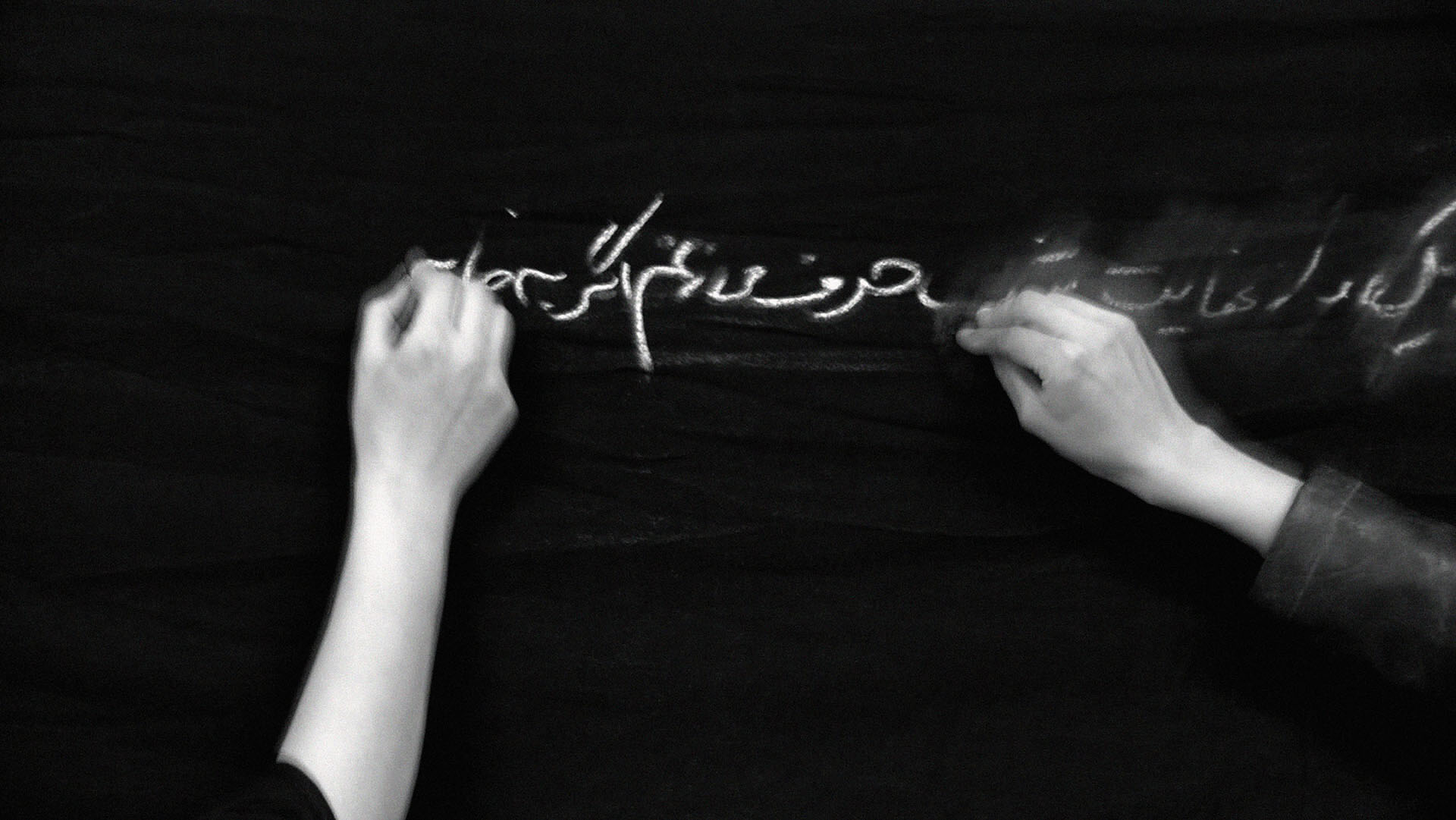
Nasim NASR, Erasure (2010), Artbank collection.
NASIM NASR
"Iranian-born, Sydney-based artist Nasim Nasr's two channel video Erasure is part of an ongoing consideration of the complexity of gender relations and cultural identities and the role of language in oppression, particularly of women. In this work, Nasr is dressed in a chador and writes in chalk on an empty version of the same garment, stretched out like a chalkboard. As though writing lines as punishment, or seeking to convey lessons, she writes from right to left in Farsi to recall her memories of growing up in Iran, and from left to right in English translating the words of the feminist Iranian poet Forough Farrokhzad. However, almost as soon as the words are written they are erased."
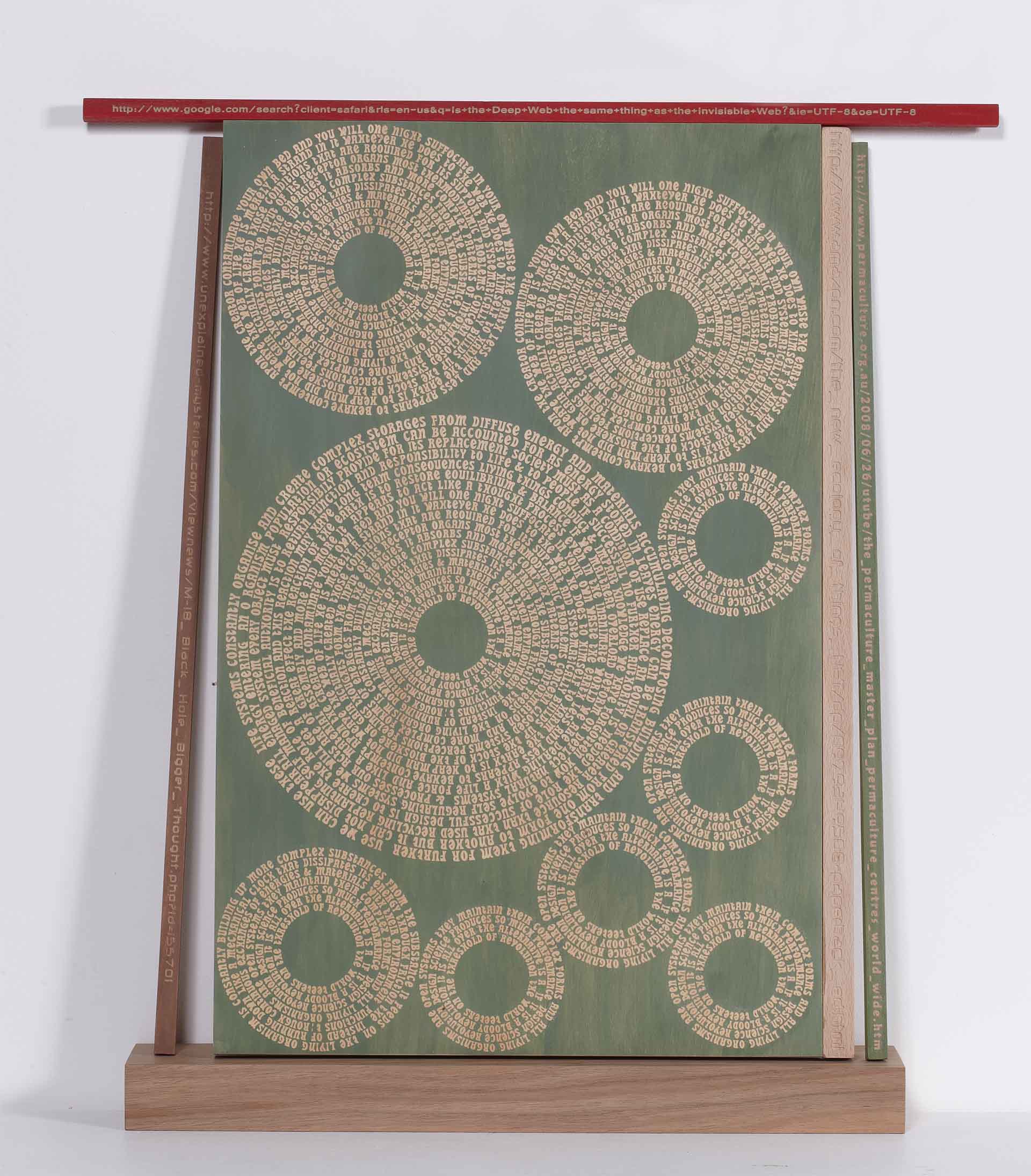
Emily FLOYD, Child and Adult Sculpture [2] (2009), Artbank collection.
EMILY FLOYD
"For Melbourne-based artist Emily Floyd, text offers both form and function, and has become distinguishing aesthetic and conceptual device in her practice, influenced by an array of social imaginings of the twentieth century, from the teaching philosophies of Rudolf Steiner to the colour and geometry focus of the Bauhaus and Russian Constructivism. Engraved on recycled timber the text in her work Adult and Child Sculpture No.2 includes URLs that point to theories of ecology, and spiral motifs outlining permaculture's key ethics. Part tablet of learning, part wooden plaything, the title of this work refers to Floyd's hope for 'the possibility of generations working together to achieve change'."
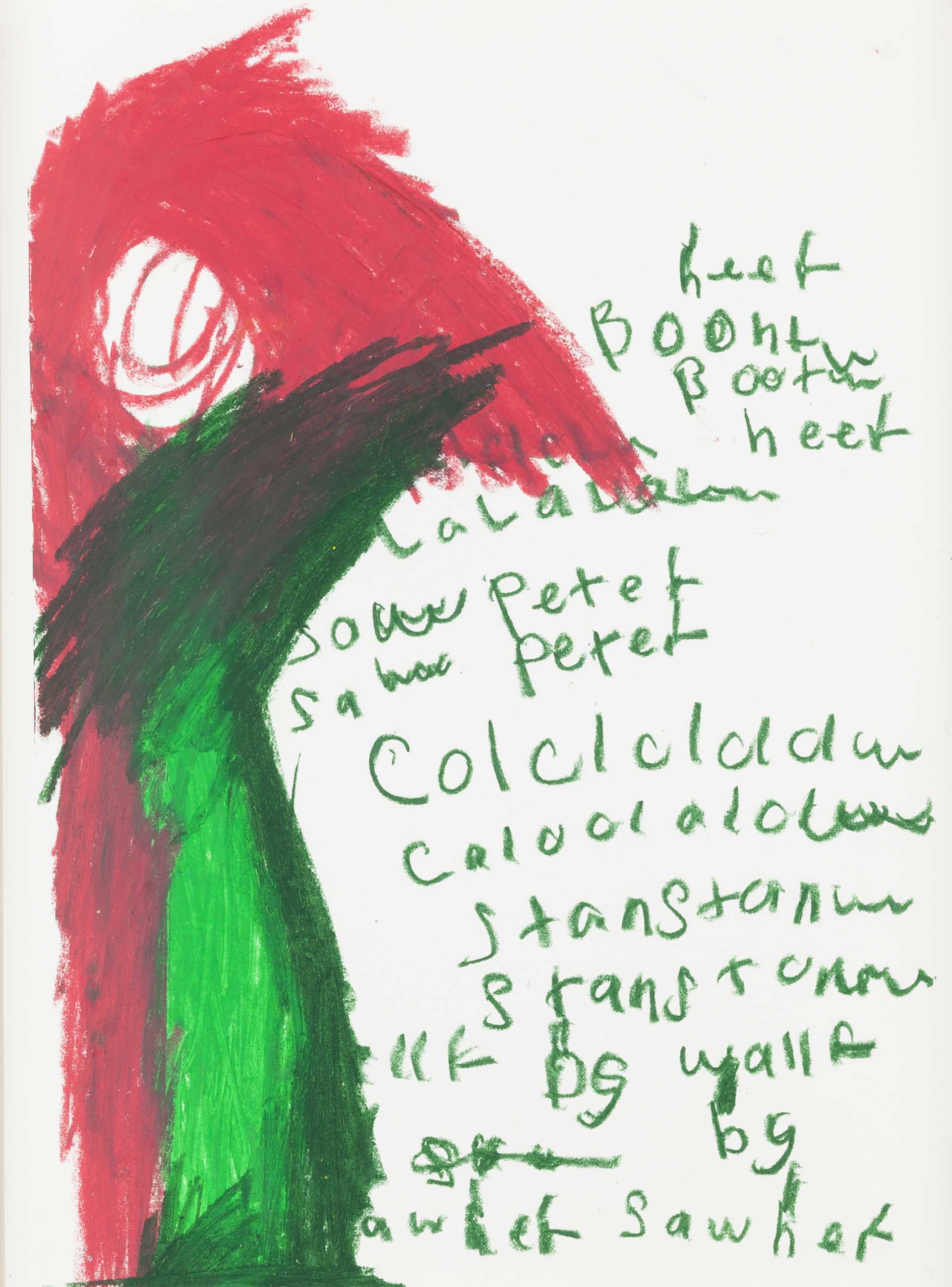
Peter DUDDING, Saw her at the Station (2016), Artbank collection.
PETER DUDDING
"Possessed with an exuberant sense of colour, Dudding's work fuses gestural mark making with scrawled fragments of handwritten text referring to personal experience and preoccupations with music and popular culture. In 2016, Sydney painter Paul Williams curated Dudding's first solo exhibition, 'Pig Dog' at Firstdraft Gallery, from which these works derive. An outcome of a mentoring relationship facilitated by Studio A, Williams described Dudding's work as 'like a hard slap in the face, or a good deep belly laugh, a smelly fart or a burp after a good meal – it's real and it wakes you up'."
Let's Talk About Text runs from March 16 - June 16 at Artbank Sydney — 222 Young St, Waterloo.
Images: Steven Woodburn. Top Image: Alice Lang, 'The Shits' series, 2015.
